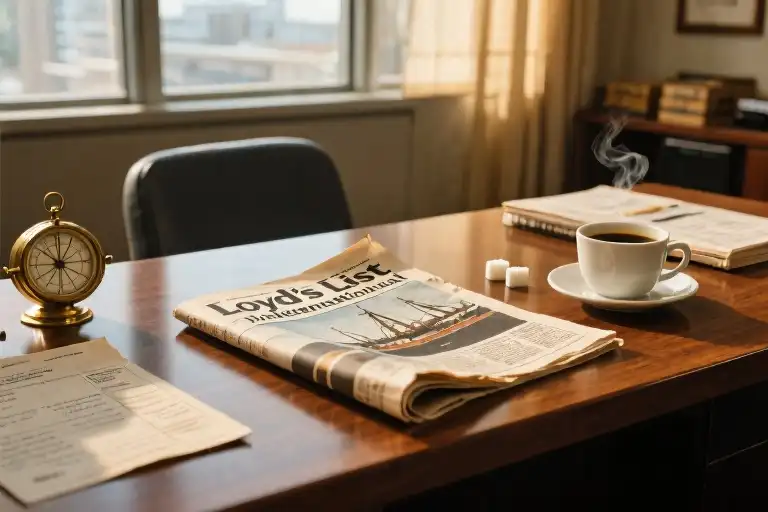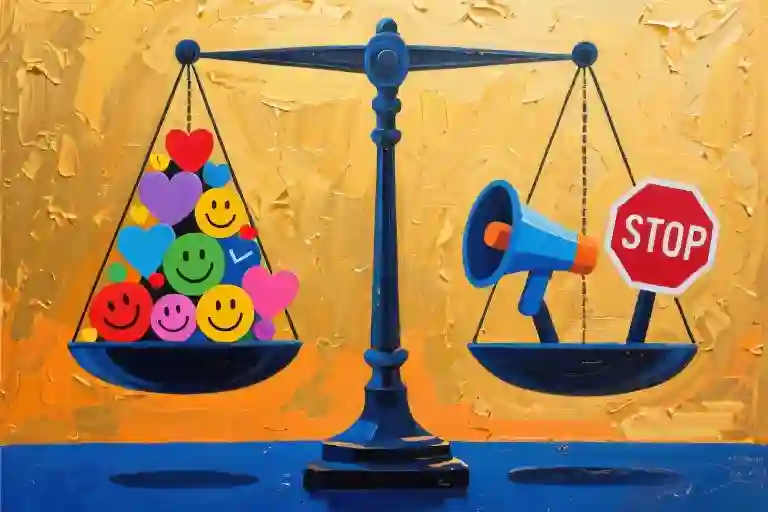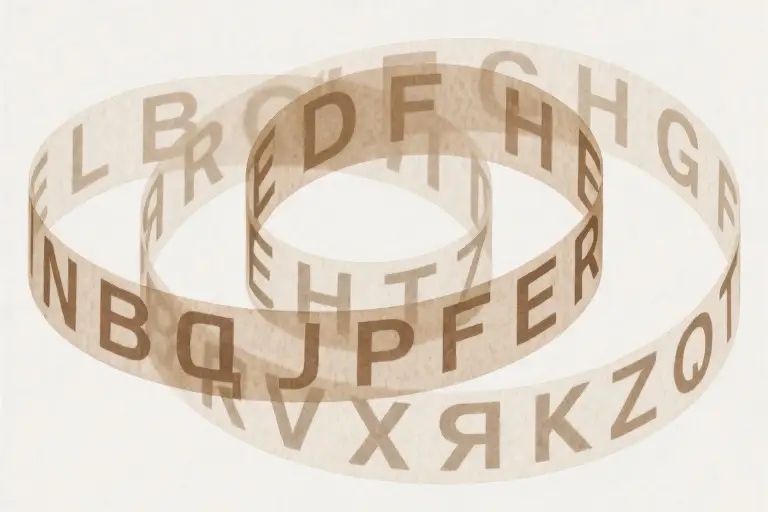The most pivotal moments in our careers often arrive unannounced, like cryptic messages from a future self we’ve yet to become. They appear disguised as ordinary workday occurrences—a passing comment from a colleague, an unexpected project assignment, or in my case, the weighty thud of a trade magazine landing on my desk. These are the signals that shape professional destinies, if only we learn to decipher them.
Marine insurance was never part of my imagined career path. Few university students dream of becoming guardians of global commerce, the invisible safety net beneath container ships carrying everything from Brazilian coffee beans to German precision machinery. Yet this unglamorous profession quietly makes international trade possible—a reality I’d come to appreciate through a series of small revelations, beginning with Jake Jenkins seeing potential where others saw just another business student.
What fascinates me now about these career defining moments is their dual nature. Like marine insurance itself, they function both as practical safeguards and symbolic thresholds. The magazine Jake dropped on my desk that morning contained technical articles about hull clauses and cargo liabilities, but its true significance lay in being a tangible vote of confidence from an industry veteran. In our world of calculated risks and actuarial tables, such gestures carried more weight than any formal promotion.
Toronto’s financial district in the 1980s operated on unspoken codes. The marble lobbies and brass-railed elevators housed ecosystems where junior professionals learned through observation—how senior underwriters carried their briefcases, which restaurants hosted Lloyd’s brokers, the particular way seasoned claims adjusters sipped their scotch while reviewing loss reports. My initiation into this world began when Jake bypassed protocol to offer part-time work to someone still studying for the Chartered Insurance Professional designation. His phrase “get your feet wet” struck me as wonderfully apt, conjuring images of Lake Ontario’s harbor waves lapping against cargo vessels we insured.
Marine underwriters formed a tight-knit community where everyone knew whose signature appeared on which policies. We insured not just ships but their peculiar contents—Dutch tulip bulbs requiring precise temperature controls, delicate laboratory equipment shipped from Switzerland, even circus animals transported between continents. Each policy told a story about human ingenuity and vulnerability. The real education happened outside textbooks, in deciphering why a seasoned underwriter might decline coverage for Venezuelan cocoa beans during monsoon season, or how to calculate premium adjustments when pirates became active in the Malacca Strait.
When my career-defining moment came, it arrived with the crisp sound of glossy pages hitting laminate. Jake’s morning ritual involved collecting industry publications from the mailroom, his route through the office serving as a subtle management technique. That day’s trajectory—past the accounting cubicles, around the claims department, finally stopping at my workstation—marked invisible pathways of professional validation. The magazine’s cover featured an article about emerging risks in container shipping, its dog-eared corner suggesting Jake had read it with me in mind. In our world of maritime traditions, this was equivalent to being handed the keys to the executive washroom.
Early career signals often resemble marine insurance policies themselves—their full value only becomes apparent when viewed through the lens of experience. What initially felt like Jake performing a Wall Street archetype gradually revealed itself as masterful professional development. His theatrical delivery of underwriting wisdom (“Never trust a calm sea at dawn”) contained actual lessons about reviewing weather reports in claims investigations. The magazine he gave me became a Rosetta Stone for decoding this unique professional language, its margins eventually filled with my notes connecting academic concepts to real-world scenarios.
Perhaps this is why marine insurance professionals develop such reverence for physical documents in our digital age. The weight of paper reminds us that some career lessons can’t be transmitted through email attachments or video calls. That particular magazine still occupies a shelf in my home office, its spine cracked at the article about Baltic Exchange indices—a bookmark preserving the moment I stopped seeing insurance as mere risk transfer and recognized it as the circulatory system of global commerce.
The Unexpected Job Offer
Career turning points often arrive in the most unassuming ways. For me, it began with a part-time opportunity that defied industry norms—a chance to ‘get my feet wet’ in marine insurance while still completing my studies. Jake Jenkins, a seasoned underwriter with an eye for potential, saw something worth nurturing when he extended that initial offer.
The phrase ‘getting your feet wet’ took on literal meaning in our world. Toronto’s harborfront offices overlooked the very ships we insured, their cargo holds filled with everything from automotive parts to zirconium ingots. Jake’s invitation wasn’t just about testing the waters—it was an immersion into the physical and metaphorical lifeblood of global trade.
Three aspects made this opportunity extraordinary:
- Industry convention broken: Marine insurance rarely hired students mid-degree
- Mentorship demonstrated: Jake invested time explaining Lloyd’s policy wordings over coffee
- Promise kept: When I passed my CIP (Chartered Insurance Professional) exams, that temporary desk became permanent
The morning I received my exam results, Jake didn’t congratulate me—he slid a file folder across his desk containing full-time employment paperwork. His exact words still resonate: ‘The harbor never waits for perfect conditions. Neither do careers.’ That folder held more than a contract; it contained validation that someone believed in my potential before I fully did myself.
Looking back, those early months established patterns that would define my professional growth:
- Practical learning: Analyzing actual claims files rather than textbook cases
- Industry immersion: Understanding how cargo manifests translated to risk assessments
- Professional initiation: Learning the unspoken rules of our ‘small but mighty’ underwriting community
What began as a temporary position became my gateway to understanding marine insurance’s hidden ecosystem—where every policy connected to supply chains spanning continents, and where a mentor’s belief could alter a career’s trajectory. That first ‘yes’ from Jake opened doors I didn’t yet know existed, proving that sometimes career-defining moments arrive disguised as modest opportunities.
The Hidden World of Marine Underwriting
Stepping into the Toronto marine insurance scene in the early 1980s felt like gaining access to an exclusive club. The Port of Toronto buzzed with activity, handling over 2 million metric tons of cargo annually – everything from Saskatchewan wheat to Ontario-manufactured auto parts destined for overseas markets. As a new underwriter, I quickly learned our small community of professionals held the invisible threads that kept global trade moving smoothly.
The Oddities We Insured
Marine underwriters routinely handled policies for:
- $50 million cargo ships carrying volatile chemicals
- Precious art collections touring international galleries
- Experimental agricultural equipment being sea-tested
- Even the occasional circus animal transport (yes, we once insured two performing elephants sailing from Halifax to Rotterdam)
Each morning’s mail brought fresh surprises. One day you’d be calculating risks for a shipment of Icelandic geothermal piping, the next you’d review coverage for delicate medical equipment being air-freighted to Nairobi. This variety made every risk assessment feel like solving a unique puzzle where the pieces kept changing shape.
The Apprenticeship Tradition
What struck me most was the industry’s unspoken mentorship culture. Senior underwriters like Jake didn’t just train newcomers – they adopted them. The initiation ritual always began the same way:
- The Coffee Test – Could you remember how each veteran took their brew? (Jake preferred his with exactly two sugar cubes and a dash of cream, never milk)
- The Glossary Gauntlet – Mastering terms like ‘general average’ and ‘jettison’ before being allowed to speak in meetings
- The Ledger Legacy – Being entrusted with handwritten claim records dating back to the 1950s
This oral tradition preserved institutional knowledge in an era before digital databases. I still remember the day Jake slid a 1973 Lloyd’s casualty report across my desk, pointing to a coffee stain he’d made as a rookie. ‘That’s history,’ he said. ‘Now you’re part of it.’
The Unwritten Rules
Marine insurance operated on several paradoxes:
- Formality vs. Flexibility – Strict protocols for documentation, but creative solutions for unique risks
- Global Reach vs. Local Knowledge – International scope requiring hyperlocal expertise about every port’s quirks
- Risk Aversion vs. Bold Bets – Calculating probabilities while sometimes backing unconventional ventures
Newcomers learned these nuances through observation and gentle correction. When I once quoted standard rates for a Great Lakes route, Jake quietly noted winter ice conditions required a 15% premium adjustment. These moments transformed textbook knowledge into practical wisdom.
What made this hidden world so fascinating wasn’t just the exotic risks we covered, but the human systems that had evolved to manage them. The marine insurance community functioned like a guild – protecting trade by maintaining rigorous standards, while quietly nurturing the next generation who would uphold them.
The Revelation on the Desk
The morning sunlight slanted through the floor-to-ceiling windows of our Toronto office, casting geometric patterns across the actuarial reports stacked on my desk. I was reviewing a cargo liability claim when the rhythm of polished Oxfords on marble flooring signaled Jake’s arrival – that distinctive cadence every junior underwriter learned to recognize before seeing.
Jake moved through the underwriting floor with the practiced ease of a seasoned captain navigating his ship. A nod to the claims adjusters by the coffee station, a murmured question to the reinsurance team, a pat on the shoulder for the new accounting clerk. His path through the office wasn’t just physical movement; it was a masterclass in maintaining professional connections.
Then it happened. Three seconds that would redefine my understanding of this profession. As Jake passed my workstation, a thick industry magazine – the kind with that particular glossy heft only professional publications achieve – left his hand and landed squarely before me. The sound was precise: the muted thud of dense paper meeting mahogany, the slight rustle of pages settling. A tiny corner of the cover had folded upon impact, revealing the edge of what appeared to be a table of contents.
The magazine’s cover caught the light as I reached for it. ‘Lloyd’s List International’ proclaimed the masthead in navy blue serif font, the June issue. My fingers registered the slightly textured coating of the cover stock, that particular quality that makes important documents feel substantial. Before flipping it open, my eyes caught the lead article title peeking from beneath the folded corner: ‘The Unseen Architecture of Marine Risk’ by a senior Lloyd’s underwriter whose papers we studied in our certification courses.
In that suspended moment, several realizations crystallized:
- This wasn’t random – the magazine had been deliberately selected
- The article placement was intentional – Jake had marked this specific piece
- The timing coincided with my first complex hull underwriting assignment
As I would later understand, this was classic Jake Jenkins mentorship: never explicit instructions, always carefully staged learning opportunities. That dropped magazine contained more career guidance than any formal evaluation could provide. The physicality of the moment – the sound, the weight, the visible wear on the edges from previous readers – made the lesson unforgettable in ways digital resources never achieve.
The office continued its usual hum around me, oblivious to this quiet turning point. Someone laughed by the photocopier, phones rang at the brokerage desk, the maritime weather report played softly on the office radio. Normal Tuesday morning sounds that would forever frame my memory of when professional intuition began transforming into concrete understanding.
The Reconstruction of Understanding
That magazine sat on my desk for three days before I gathered the courage to open it. The glossy cover seemed to mock my hesitation, its bold headline about ‘Innovative Risk Modeling in Marine Cargo’ both intimidating and strangely alluring. My first read-through left me more confused than enlightened – the concepts clashed violently with the rigid frameworks I’d memorized for my professional designation exams.
The Dissonance Between Theory and Practice
Page after page, industry leaders proposed approaches that contradicted our textbook doctrines. Where my exams demanded strict adherence to standardized risk matrices, these practitioners advocated for fluid, experience-based judgment calls. The cognitive dissonance was physical – I remember my fingers leaving damp fingerprints on the margins as I nervously compared passages to my highlighted study notes.
This wasn’t just academic disagreement; it felt like professional heresy. The magazine’s case studies described underwriters making decisions based on gut instincts honed by decades of handling peculiar claims – from temperature-sensitive pharmaceuticals to irreplaceable medieval artifacts. My exam prep had focused on actuarial tables and probability models.
Reassessing the Mentor
This intellectual turmoil forced me to reevaluate Jake’s management style. What I’d initially dismissed as theatrical Wall Street mimicry now appeared deliberate. His dramatic pauses during risk assessment meetings weren’t performative – they were the visible manifestation of precisely the experiential judgment these articles celebrated.
I began noticing subtle patterns:
- How he’d linger over unusual cargo manifests
- The way he’d recount obscure claims from the 1970s during new policy discussions
- His insistence that we visit dockside warehouses to ‘smell the risk’
These weren’t eccentricities – they were living examples of the magazine’s central thesis: marine underwriting is equal parts science and art.
The Slow Dawn of Comprehension
The real epiphany came three months later during a complex machinery shipment claim. Faced with conflicting damage reports, I instinctively reached for procedural manuals before remembering a passing comment in the magazine about ‘reading between the surveyor’s lines.’ Applying that lens, I spotted inconsistencies everyone had missed.
When Jake approved my findings without modification, something clicked. The magazine hadn’t been contradicting my education – it was revealing the next level of understanding that only emerges after foundational knowledge becomes second nature. Like jazz musicians mastering scales before improvising, we needed those rigid exam frameworks before we could bend them wisely.
This cognitive shift transformed how I viewed our entire profession. The magazine’s dog-eared pages became my secret curriculum, its margins filled with notes tracking my evolving comprehension. Where I once saw contradiction, I now saw continuum – and recognized Jake had been guiding me along this progression all along.
From Performance to Conviction
That dog-eared industry magazine still sits on my bookshelf, its spine cracked from repeated readings. What began as a theatrical prop in my early career theater—another Wall Street wannabe moment—gradually transformed into my professional compass. The journey from seeing Jake’s management style as performative to recognizing it as authentic leadership mirrors how we all construct our professional identities.
When Hollywood Meets Underwriting
Charlie Sheen’s wide-eyed rookie in the 1987 film had nothing on my first months in marine insurance. The crucial difference? Our office lacked the dramatic score but overflowed with real-world stakes. Where movie traders shouted about stock prices, we quietly calculated risk exposure for cargo ships crossing winter North Atlantic routes. Jake’s seemingly scripted “drop the magazine” moment contained more career truth than Gordon Gekko’s entire “greed is good” monologue.
Three revelations reshaped my perspective:
- Industry publications as identity builders – That casually tossed magazine wasn’t just reading material; it was a baton pass. The highlighted articles formed a curriculum beyond certification exams, teaching the unwritten codes of our niche profession.
- The method behind the ‘acting’ – Jake’s Wall Street-esque mannerisms weren’t affectations but tools. The crisp suits commanded respect during client negotiations. The dramatic pauses gave weight to risk assessments. What I’d mistaken for performance was actually professional armor.
- Rituals create professional gravity – Maintaining my own magazine archive became more than habit—it was continuity. Each volume added to the shelf marked another layer of understanding, turning specialized knowledge into second nature.
The Anatomy of Professional Belief
Marine insurance operates on the paradoxical principle that we must simultaneously expect disasters and believe in safe passage. This duality mirrors career development. Early on, I focused solely on the technical aspects—calculating hull premiums, understanding general average. The magazine’s recurring themes of long-term client relationships and ethical practice seemed like fluff compared to hard skills.
The turning point came when I handled my first major claim. A container ship’s engine failure during a storm required coordinating salvage crews across three time zones. Textbook procedures mattered, but the crisis resolution depended on those “soft” skills the magazine championed—diplomacy with angry shipowners, creative problem-solving with surveyors. Like seawater slowly permeating a ship’s hull, the publication’s lessons had seeped into my professional consciousness.
Curating Your Professional Canon
Every niche industry has its sacred texts—the manuals, journals, or case studies that transcend information to become formative. For marine underwriters, it’s Lloyd’s List and specialized publications like the one Jake gifted me. Their value lies not just in content but in what they represent:
- Continuity – Linking past practices to emerging risks (like cyber threats to navigation systems)
- Community – Recognizing recurring bylines creates invisible mentorship networks
- Consecration – The physical act of preserving issues reinforces commitment to the craft
Ten years later, when a new hire asked why I kept decades-old periodicals, I understood Jake’s impulse perfectly. Reaching for a 2013 volume with Post-it notes still protruding, I answered, “Here’s where you’ll really learn our business.” The circle completed itself as I placed it on her desk—not with a dramatic flourish, but with the quiet certainty of someone who’d stopped performing and started believing.
Where Is Your Workplace Magazine?
That worn-out industry journal still sits on my bookshelf, its dog-eared pages bearing witness to a career’s worth of turning points. What began as an ordinary object became a compass pointing toward professional growth—a physical reminder that career-defining moments often arrive disguised as everyday interactions.
The Dual Meaning of Workplace Artifacts
In marine insurance, we learn to assess both tangible assets and intangible risks. That magazine embodied both: a physical item carrying the weight of professional validation. Such objects become symbolic waypoints in our careers, much like:
- Industry certifications marking competency thresholds
- First business cards representing professional identity formation
- Saved client emails documenting skill development
Jake’s casual magazine drop taught me that mentors communicate through actions more than speeches. His selection of that specific issue (volume 42, matching my employee ID) showed deliberate mentorship—a pattern I’ve since recognized in successful professionals across finance sectors.
Creating Your Career Signal Journal
Early career signals often only reveal their importance in hindsight. That’s why I now advise maintaining a “workplace observations” log. Try this framework:
| Signal Type | Example | Interpretation |
|---|---|---|
| Task Assignment | Being asked to draft a client proposal | Demonstrates trust in your communication skills |
| Social Cues | Invitation to lunch with senior team | Indicates cultural fit assessment |
| Resource Sharing | Receiving industry reports | Suggests knowledge investment in you |
Track these moments with timestamps and initial reactions. Review quarterly—you’ll spot patterns invisible in daily work. That magazine I nearly dismissed as office clutter? It contained the exact risk assessment methodology that later helped me pass my CIP (Chartered Insurance Professional) exams.
The Ripple Effect of Recognition
Marine insurers understand how small events create large consequences—a single container fire can reshape trade routes. Similarly, that magazine moment altered my:
- Professional self-perception (from temporary worker to career underwriter)
- Learning approach (shifting from exam-focused to industry-contextualized knowledge)
- Mentorship style (now I deliberately create “magazine moments” for new hires)
Twenty-three shipping containers’ worth of experience later, I still pause when handling physical documents in our digital office. Each could be someone’s turning point. So I’ll leave you with this: What ordinary object in your workspace might actually be your career’s Rosetta Stone? Keep turning pages—the right one changes everything.





